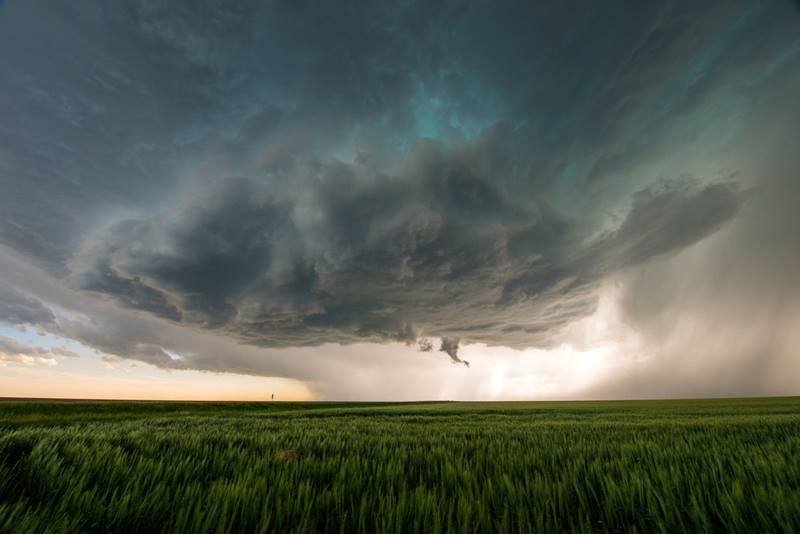The air pollutant secondary organic aerosol (SOA) forms when ammonia and amines react with oxygenated species. When ammonia is present when alkenes react with ozone, SOA increases in size and numbers. This may be due to Criegee intermediates. New research found that a particular amine, dimethylamine, reacts 34,000 times faster with one version of the Criegee intermediate acetaldehyde oxide than with another version of the same compound.
Tag: atmospheric radiation

A Day and Night Difference: Molecular Composition of Aerosols Differs from Day to Night
Aerosols particles in the atmosphere are an important factor in the Earth’s climate, but researchers lack information on these aerosols’ molecular composition, especially for aerosols during the day and night above agricultural fields. In this research, scientists examined secondary organic aerosols over agricultural fields in the Southern Great Plains in Oklahoma. They found that the aerosols’ composition and structure differ from day to night and that some aerosols are ultimately from urban sources.
DOE Awards $15.6 Million for Atmospheric Research to Improve Climate Modeling
The U.S. Department of Energy (DOE) today awarded $15.6 million for new research studying the properties, formation, and interactions between atmospheric clouds and the aerosols that form them.
Soot Particles Vary in How They Soak Up the Sun
Soot in the atmosphere absorbs sunlight, warming the Earth’s atmosphere. This analysis shows that soot particles’ shape and composition can vary significantly. This creates discrepancies between real-world observations and predictions from models. This research used measurement and modeling to provide a framework that explains variation in atmospheric soot.